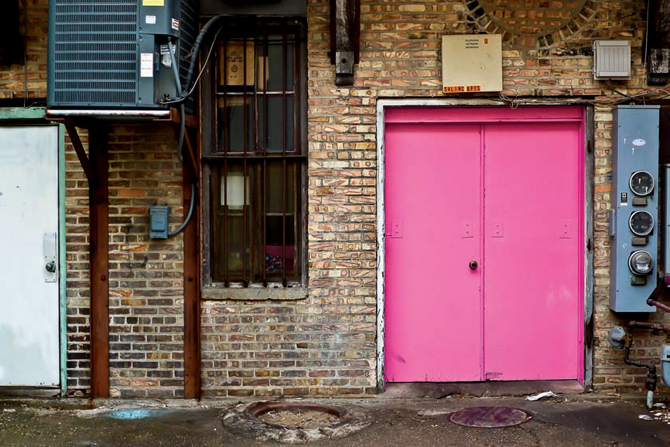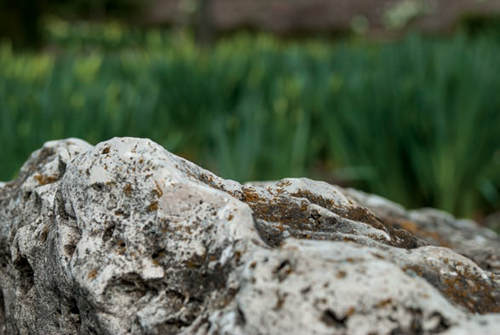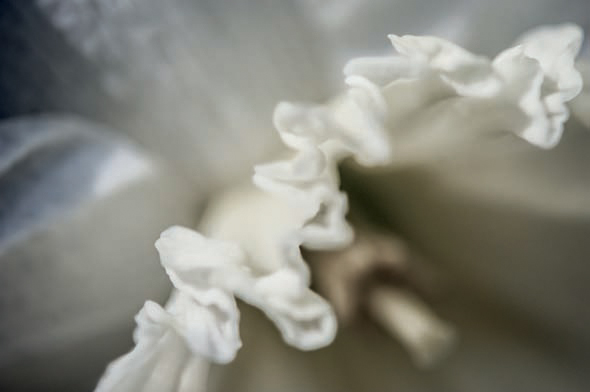Subject Matter and Composition
One of the greatest advantages of a minimalist approach is that the most seemingly banal subjects can make the most interesting photographs. While traditional photographers may have to drive a hundred miles, setting out at four o’clock in the morning to capture the perfect sunrise over the perfect landscape, or invest in a studio full of incredibly expensive equipment to practice their art, you can give minimalist photographers a basic camera and an object, and they are good to go. I have spent a whole day working with a jar of screws and a hundred dollar point-and-shoot. Some of the images from these low-budget shoots are among my best sellers.
Seeing
Photography is about seeing, and that cannot be emphasized enough. We all know what a screw looks like, that it has a thread and a head, but how many people have really looked hard at a screw? A closer look reveals so much more, especially if it is old and used—with metal shavings, dents, pits, and possibly flecks of old paint. The head design could be one of a hundred variations, and it could be anything from pristine to unusable due to the slot or slots being worn beyond recognition.
Light is, of course, an important factor. It can be hard, highlighting the metallic nature of the screw with its sharp tonal changes, or it can be soft, giving very smooth tonal gradients. The same screw framed in different ways will lead to photographs with different visual results. The negative space around the screw becomes as important as the screw itself.
These suggestions demonstrate the difference between looking and seeing. We look at things whenever our eyes are open, but we only really see things when we make a conscious effort to do so. Seeing takes practice. When we learn to see, just about anything can be the subject for a potentially good photograph. If the camera records what we really see, the photograph stands a chance of being a good one, but if it merely records what we look at, the image will never be more than a snapshot. After I have really seen something, the photograph comes easily, and if I haven’t seen it, the photograph will never come.
Minimalism is about getting to the essence of something. With this image, the essence is in the relative positions of the limbs.

Something simple in the middle of an urban scene, in this case a shocking pink door, can provide an interesting contrast
A daffodil photographed to emphasize the delicacy of the flower. The fact that it is hardly recognizable forces the viewer to see the attribute as opposed to the object.

A minimal landscape that is very different than a traditional landscape because there are no leading lines and no focal point. The image instead relies on texture and a very simple, flat composition.
Of course, the subject does not have to be as small or even as simple as a screw. With larger objects, framing makes or breaks the photograph. There is no rule that says the whole object has to be in view, or that it must fill the frame. Cropping an object is a great way to practice seeing because it forces you to see in terms of lines, shapes, tones, and contrast. This is the first step toward abstraction because the identity of the object becomes less obvious. It is impossible to be a good photographer, let alone a minimalist photographer, without an understanding of abstraction.
Going in the other direction, making an object appear very small in the frame can have a similar effect. If you shrink an object enough, it becomes, essentially, a point. Points and lines are extremely important elements in abstraction and minimalism. An object can be large enough to be recognizable yet still work as a point in a composition. A common example is a few seagulls over a calm sea under a clear sky. The seagulls, though recognizable, serve as points in the composition, and are often balanced by the single line in the image, or the horizon.
Framing
Framing, done well, can make an image more abstract and less literal. Good framing forces the viewer’s brain to see the photograph with fresh eyes. When we see a chair presented normally and in a common context (all of it in the frame in a sitting room), the brain recognizes it for what it is, decides that there is nothing of interest going on, and stops working on the image. Now, show only a part of the seat, or change the context to a distant shot of an armchair on a beach. The viewer’s brain wakes up and sees the image because it had to work to build context. Novelty for novelty’s sake is usually a bad idea photographically, but novelty coupled with something genuinely interesting will always make a strong image.
Any photographer should aim to make composition an instinctive skill. The ideal is to be able to size up a scene, frame it, and shoot, knowing that a reasonable photograph will result. When I see photographers who advise others to have the tic-tac-toe grid on their viewfinders so they can use the rule of thirds to compose an image, I want to punch walls. The only possible use for this grid is after the fact. If an image works much better than expected, or if it fails to work despite the photographer’s best attempts, the grid may—just may—be a good way of finding out something interesting. As a photographer, you need to be surprised; if you turn photography into math, this is not going to happen. The resulting work will be workman-like at best, but more likely it will be static and devoid of interest.
This is not an argument for not knowing theory, though, and I recommend understanding the basics, such as the rule of thirds, tone, color, and so forth. I do cover these topics later on in the book. If you are truly dedicated, I recommend taking a drawing class because it will lay a good foundation for future photography endeavors. Drawing is hard, but even if you don’t become the next Picasso, the insight gained will probably get you further along than a weekend photography workshop. To draw well, you have to be able to see in the proper sense of the word—it cannot be fudged. Those who teach drawing understand the issues involved in making a two-dimensional image from a three-dimensional scene better than anyone who hasn’t picked up a pencil ever could. It is no coincidence that many people we now recognize as great photographers spent years studying painting and drawing before they picked up a camera.
A minimalist approach to composition is, in many ways, different than a traditional one, but the best minimalist photographers usually start off by mastering the traditional approach to composition and working with it, often for years, before they start to pare it down and arrive at the essence of the potential image. Traditional composition includes removing clutter and ensuring that the image is not messy. Aesthetic minimalism can be seen as an extreme extension of this process.
The best minimalist photographers usually start off by mastering the traditional approach to composition and working with it, often for years.
An interesting analogy can be found in music. Musicians, particularly in jazz, blues, and rock, tend to play fewer notes as they get older. In their youth, they want to show their prowess and their grasp of technique, but as they age the urge to express ideas takes over. They strip away the inessential, the purely decorative, to force the listener to focus on what’s left, the essence. Photography is no different.
At this stage you may be thinking that first going the traditional route and then the minimalist route is a waste of time. Why not just cut out the traditional and go straight to photographing, say, two seagulls and a horizon? Although some photographers have a good enough eye to do this, very few can carve out a career using this approach. The essence of something has to be arrived at by stripping away the inessential, and is not something that can be arrived at instantly or by sheer luck.


